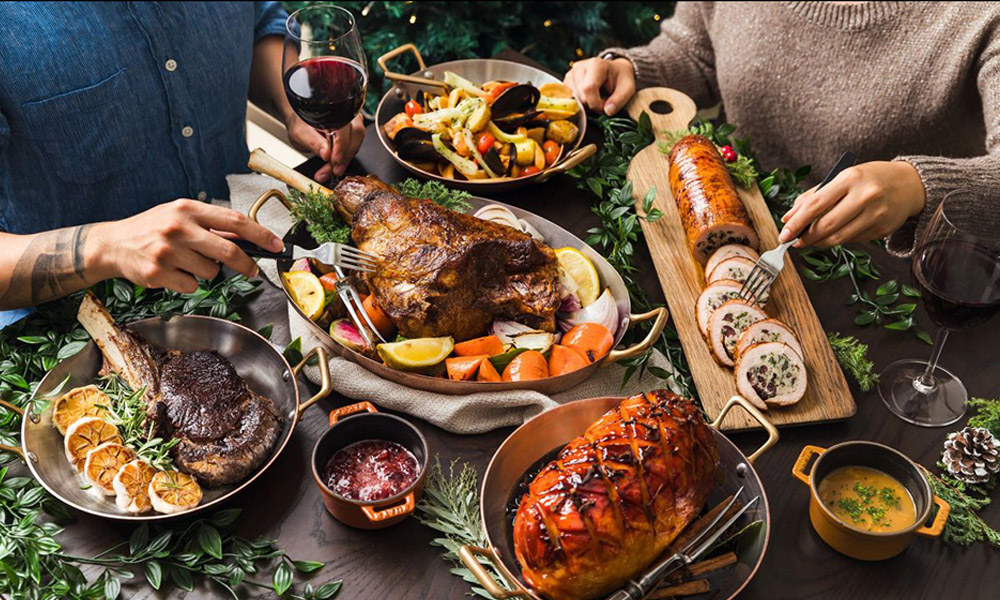By Vibrant Dot Staff
Nothing harkens summer in Provence better than the sweet scent of lavender. Across the iconic countryside, soothing fragrance emanates from sweeping fields of delicate mauve, lavender distilleries, and lavender honey, soaps, crepes and sorbets. There’s a magic in the balmy air that brings to mind the thought — “Paradise.”
Let’s travel to three of Luberon’s ‘perched’ hilltop villages: Bonnieux, Gordes and Roussillon. These idyllic medieval stone towns, each having something to discover, are without doubt a lovely and peaceful retreat from the world.
Which is exactly what the French regard Provence as. And the jewel in the crown is the Luberon — a 600-square kilometre massif at the heart of Provence. Across the rugged mountainous landscape, striking stone villages perch atop hills, offering panoramic views of the lavender fields that blanket the countryside from June to August.
Ancient cobbled streets, stone abbeys, and fortresses define Luberon’s stunning hilltop villages, which have inspired dozens of writers, artists, and travellers for centuries. Rising above the sea of forested valleys and iconic vineyards, olive groves, and cherry orchards, they are the doorway to the ‘genuine Provencal experience’.

Let’s travel to three of Luberon’s ‘perched’ hilltop villages: Bonnieux, Gordes and Roussillon. These idyllic medieval stone towns, each having something to discover, are without doubt a lovely and peaceful retreat from the world.
Enjoy a genuine Provencal experience’ at the laid-back and enchanted villages of Luberon, which for centuries, have inspired writers, artists, and travellers by the dozen.
Bonnieux: The Hilltop Bastion
One of the finest medieval villages in the Luberon, the hilltop village of Bonnieux is an impressive sight to behold. From the church tower at its pinnacle, 19th-century honey-coloured stone houses cascade down the hillside, overlooking the rustic fields, orchards and vineyards of the Calavon river valley.
Previously home to several bishops during the 16-18th centuries, this once-affluent village has a 2,000 year-old history dating to Roman times. As such, there is much marvellous architecture to explore: ancient stone walls (remparts), medieval fortifications, stone fountains like the Dolphen Fountain, and the Pont Julien bridge built by the Romans.
Near the village summit is Rue Droite, the oldest street in Bonnieux, and the 12th-century Roman-gothic church Vieille Église, whose church tower tops the village. A second and newer church – Église Neuve – rests at the base of the village. Built in 1870, it is home to vividly depicted scenes of the Passion of Christ.
With a population of 1,400 residents, Bonnieux contains an impressive range of amenities. These include a post office, ATM, grocery store, pharmacy, tourist office, restaurants, cafes, shops, art galleries, and fashion boutiques. There is even an elementary school, community centre, library, and a bread museum – Musée de la Boulangerie, which showcases the history of sourdough bread.
Besides admiring the scenic village, also worth exploring are nearby landmarks like the Jardin de la Louve, an award-winning private garden; the Enclos des Bories, a drystone village in the Cedar Forest (Forêt de Cèdres); and the Café de la Gare, mentioned by British author Peter Mayle in his bestseller, ‘A Year in Provence’.
A delightful outdoor farmers’ market opens every Friday morning on the Place Gambetta, a small square situated in the centre of the village. The market sells the freshest produce, including strawberries, Cavaillon melon, wild boar sausage, cheeses, tapenades and jams, olive oils, honey, as well as fashion wear and crafts by local artisans.
Bonnieux also has a popular pottery market, which takes place each year during the Easter weekend.

Gordes: The White Citadel
Known as ‘one of the most beautiful villages of France’ (Les Plus Beaux Villages de France), Gordes is a magnificent citadel of white stone perched on the foothills of Vaucluse.
One of the most photographed places in Provence, its imposing beauty has historically attracted artists like Marc Chagall, Jean Deyrolle, André Lhote, Vasarelly Victor Victor Spahn, Pol Mara and photographer Willy Ronis.
Traversing the winding cobblestone streets of the “village on a rock”, it’s no surprise that the streets are lined with galleries, boutiques, luxury vacation homes, restaurants and B&B. The village’s famous beauty has made it a top attraction for tourists, as well as a prestigious choice of residence for wealthy celebrities.
Home to numerous cultural events in the summer, Gordes boasts an open-air amphitheatre, the Théâtre des Terrasses. Made of raw stone, it is the venue for the festival ‘Summer Nights in Gordes’ (Soirée d’été à Gordes).
A 10th century Renaissance rectangular castle, Chateau de Gordes, rises at the centre of Gordes, dominating the view across the Luberon region. Reconstructed in 1525, the medieval castle has a winding spiral staircase that leads to the reception room featuring a grand fireplace. The castle is now a museum exhibiting the works of the Flemish painter Pol Mara, one of Gordes’ famous residents.
A stone’s throw away from the castle is the Saint Firmin church. Named after its patron Saint Fermin (Bishop of Uzès), the originally Romanesque church was rebuilt in the 18th century, and features eight chapels with ornate, colourfully painted interiors. One of the chapels is dedicated to Saint-Crépin – the patron saint of cobblers, and another to Saint-Eloi – the patron saint of blacksmiths.
Near the church are several fascinating attractions: explore the underground labyrinth of cellars at Saint Firmin Palace (Caves du Palais Saint Firmin), the secrets of glassmaking at the Museum of Glass and Stained Glass (Musée du Verre et du Vitrail), or learn the history of olive oil and Marseille soap at Moulin des Bouillons, the oldest preserved olive oil mill.
Just four kilometres outside Gordes, in the isolated Sénancole valley, are the gorgeous rolling plains of lavender that surround the magnificent Sénanque Abbey (Abbaye De Sénanque).

Founded by the Cistercians in 1148, this Romanesque monastery is one of the most recognisable icons of Provence. Visitors come from far and wide to admire the abbey’s gray, austere beauty and its encompassing lavender fields, cultivated by the Cistercian monks who live there.
To capture this postcard-perfect scene, it is best to visit in early July when the lavender fields are in full bloom.
The abbey is open for visits by guided tour, which must be reserved beforehand.
Also a few kilometres from Gordes is the one-of-a-kind Bories Village (Village des Bories) – a collection of approximately 20 cone-shaped dry stone huts, known as bories. Designated as a ‘Monument Historique’ since 1977, these huts may have origins dating back to the Bronze Age.
Since medieval times, bories were used as shade from the summer heat, or as shelters for livestock.
Gordes’ year-round farmers’ market happens every Tuesday morning at Place du Château, in the centre of the town. The market sells local fares such as foie gras and lovely Provençal linens.
Roussillon: The Vibrant Red Village
Amongst its gray and white Luberon cousins, the village of Roussillon stands out in fiery shades of ochre. Vibrant orange-red buildings – with red tile roofs and doors – perch on a steep red cliff, in colours warm and resplendent against the azure sky.
It’s no surprise that this spectacular village is also listed as ‘one of the most beautiful village of France’, and a ‘must-see’ for tourists.
Roussillon’s vermillion hues are not by choice – the village is situated on one of the most renowned ochre deposits in the world. This natural pigment dyes magnificent rock formations in brilliant colours, which can be admired along the Ochre Trail (Sentier des Ochres), a former ochre quarry.
While Rousillion has no impressive castle, visitors nevertheless delight in the village’s photogenic ochre houses, with their ancient, beautifully carved wooden doors and stone arches. Built around 300 years ago, these vibrant houses are even more striking in the morning sun – bathed in a blaze of glory, they are an incredible sight to wake up to.

From the 11th century Church of Saint-Michel (Église St. Michel) at the top of Roussillon, take in the panoramic vista of the surrounding Luberon and the mountains of Vaucluse.
There are a few gift shops, galleries, and restaurants around Roussillon. Besides a farmer’s market held every Thursday, there is also a pottery market on Midsummer’s Eve in June.















